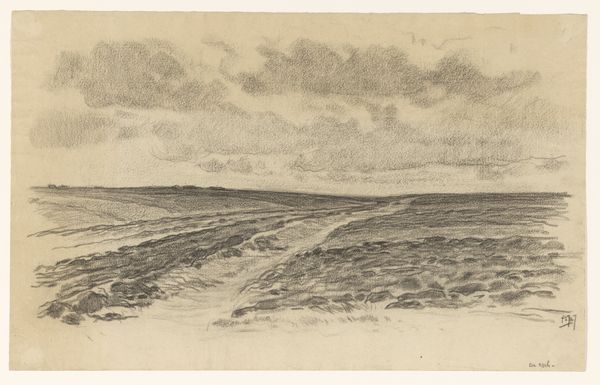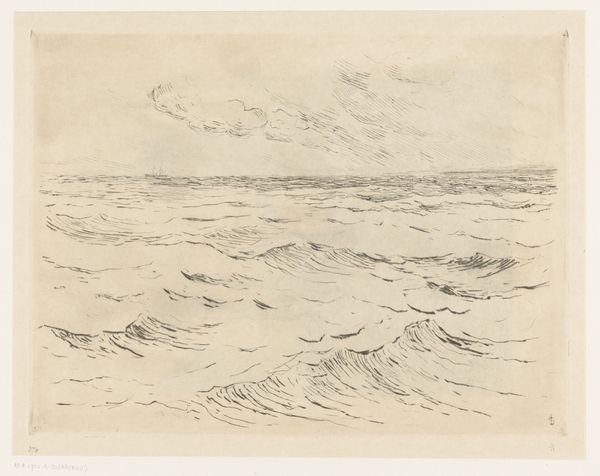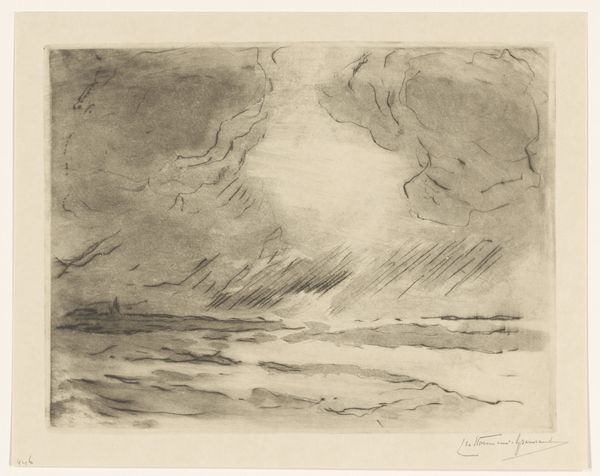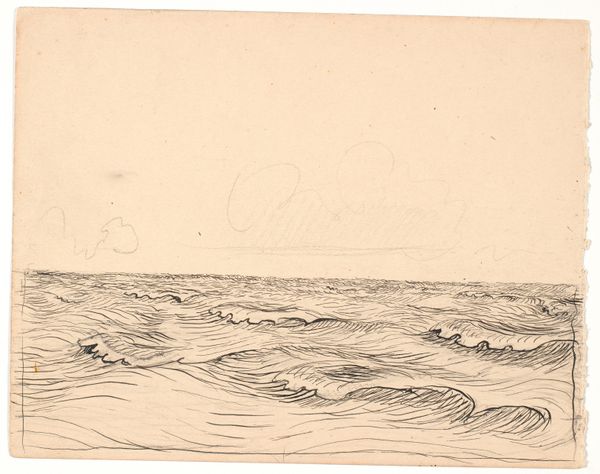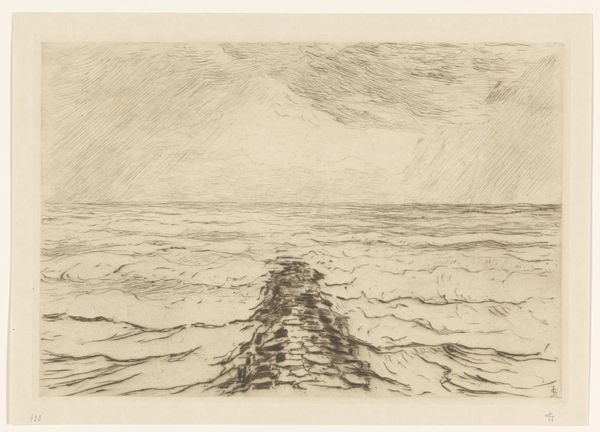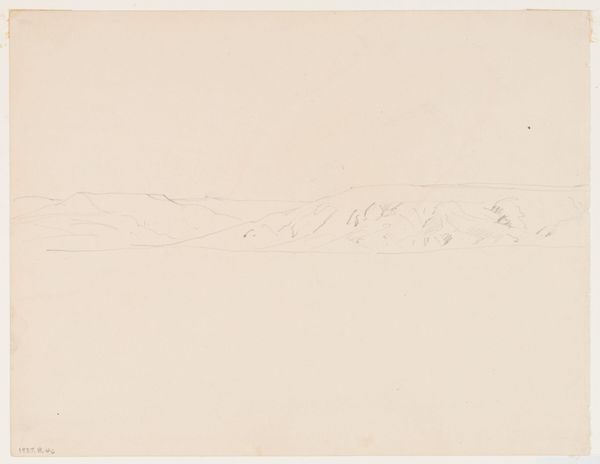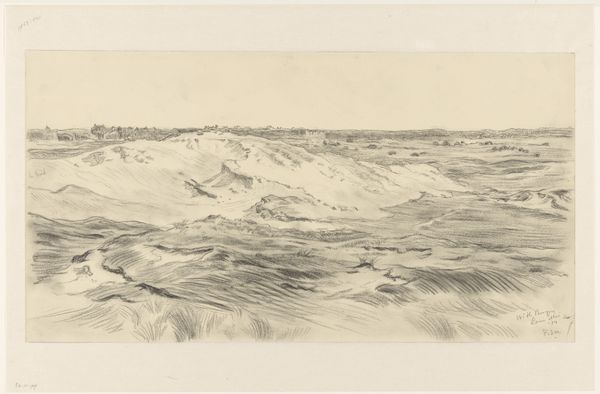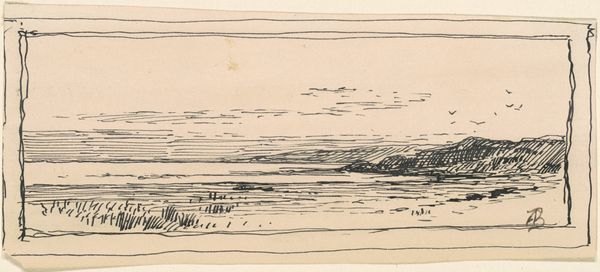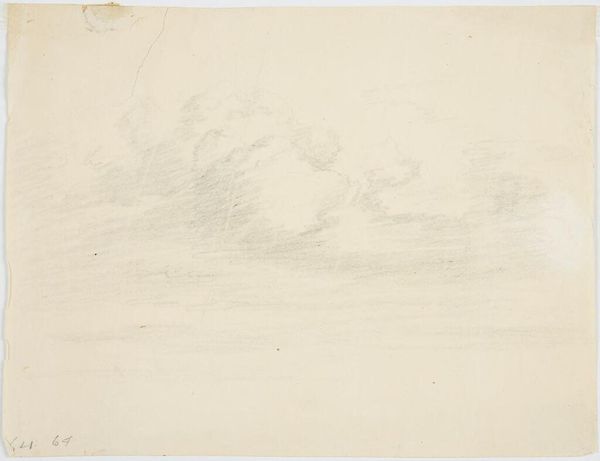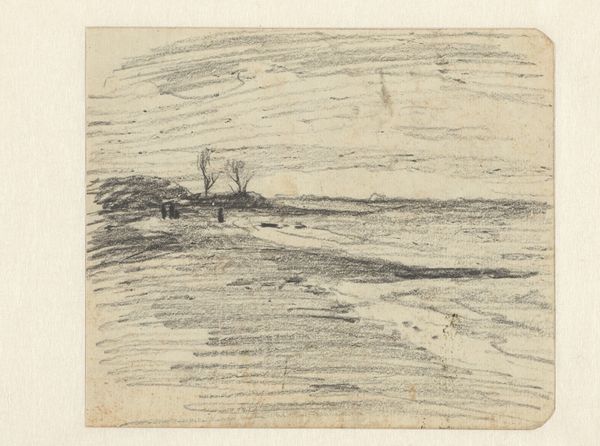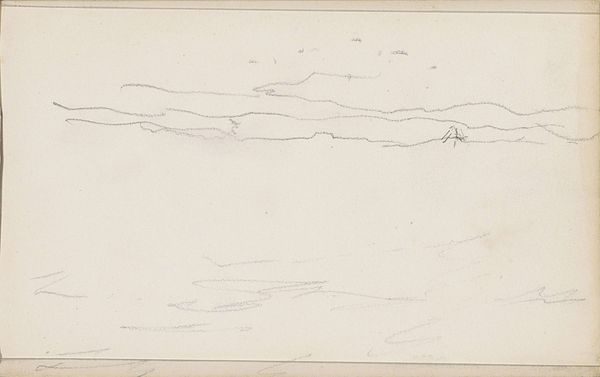
Dimensions: 248 mm (height) x 338 mm (width) (bladmaal)
Editor: This drawing, titled "Brændinger i Middelhavet," or "Breaking Waves in the Mediterranean," was created by Poul S. Christiansen in 1911 using pencil. The first thing I notice is the sketch-like quality of it; it almost feels unfinished. How do you approach a piece like this? Curator: For me, the raw materiality of this sketch is key. Consider the physical act of applying pencil to paper. Each stroke is a deliberate mark, representing labor and time. It isn't just about the scene; it’s about the making. How does the chosen medium influence our reading of the subject matter? Editor: That's interesting, I was focused on the "unfinished" look as a potential drawback. But if the *process* is the point... how does the context, being the Mediterranean sea, come into play here? Curator: Well, in 1911, the Mediterranean held symbolic weight beyond just being a location. It was a site of colonial contestation and leisure for the European upper classes. What kind of social statements is Christiansen making with this readily available tool, rendering such a famous location? Is this accessibility part of its message? Editor: I hadn’t considered the colonial aspect at all! So, you're saying the simplicity of the pencil and paper contrasts with the complex history and associations tied to the Mediterranean itself. It shifts from a romantic landscape to something more grounded, more about the here and now of the *drawing* act. Curator: Exactly! And think about the economics: pencil and paper were relatively accessible. He democratizes a location frequently romanticized for wealth. It allows us to appreciate the breaking waves for the labor inherent in artistic creation, rather than solely their aesthetic appeal. Editor: Wow, I'm seeing this in a whole new light. Thanks to your focus on the materials and context, I'm beginning to appreciate how much "raw" process can communicate. Curator: And hopefully, you also understand how looking closely at the social relations underpinning artistic production changes how we value a piece of art.
Comments
No comments
Be the first to comment and join the conversation on the ultimate creative platform.
